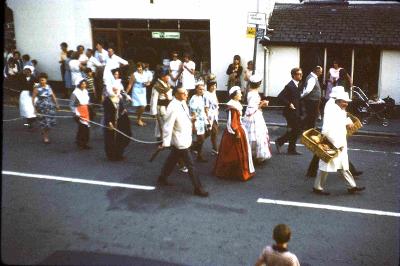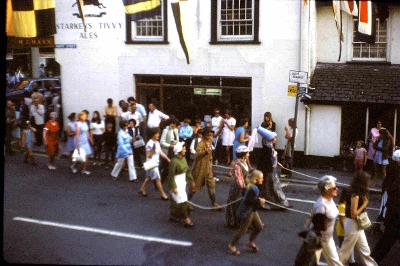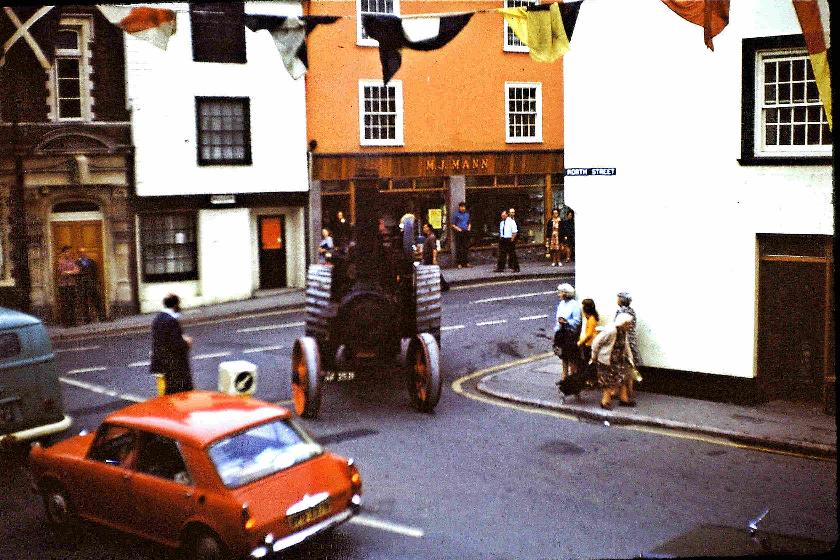An effigy of the Pope was burned in 1850. 'Urchins'
had a holiday from the public school to assist in the proceedings.
Western Times 9 November 1850 p7 col5
Two constables were pelted with potatoes, turnips, apples, burning sticks and squibs, and allegedly rockets were let off.
Mr E Windeatt defended the men, asking how they had been selected from around 200 people at the scene. He also alleged that men wearing black coats, and appearing to be gentlemen, had not been summonsed. However the Bench was unmoved, and said that this behaviour must stop - fires in the street 'were dangerous to property and a terror to the inhabitants'. They must find a field in future, or suffer the consequences.
The defendants were all fined 10s, or 7 days hard labour. Frederick Dumble did not appear in court, and a warrant was issued.
Western Morning News 27 November 1873, p2 col7
For more on the tradition of burning tar barrels, see http://www.tarbarrels.co.uk/history/ - Accessed 27-09-2017
A likely candidate for Henry Mortimore (who had the tar barrel on his head) is the son of Elizabeth Mortimore: he was 19 years old in the 1871 census. Living at the time in Chevy Chase, North Street, he was a wool dyer(?)
William Coleman may have been a carter from Kingsbridge Lane, 13 years old on the same census.
John Peacock was probably William J(ohn) Peacock, a 20 year old agricultural labourer in 1871. He lived in Cad Lane.
16 year old Richard Cornish was living in Heavyhead Lane in the census. He was a mason.
Thomas Wotton was also in the building industry. Aged 17 in 1871, and living with his parents in West Street, he was a painter and glazier.
Thomas Murch was probably 12 in the census. An agricultural labourer, he lived in Church Passage.
William Henry Shillabear may have been the William Shillabeer who was living in Cad Lane in 1871. 14 years old, he was an engine feeder at a mine.
John H(enry?) Pomeroy was a groom, domestic servant, living in East Street. He was 14 in the census.
John Parnell does not appear to be on the 1871 census for Ashburton, but a John Parnell aged 23 was in North Street in 1881. He was a general labourer.
The best candidate for Frederick Dumble, who did not appear in court, is Fredrick Dumble, who was a farm servant at Halshanger Farm in 1871. He was then aged 18.
1871 census RG10, piece no. 2080, folio 51, p14
1871 census RG10, piece no. 2080, folio 56, p23
1871 census RG10, piece no. 2080, folio 39, p29
1871 census RG10, piece no. 2080, folio 79, p31
1871 census RG10, piece no. 2080, folio 56, p24
1871 census RG10, piece no. 2080, folio 72, p17
1871 census RG10, piece no. 2080, folio 38, p27
1871 census RG10, piece no. 2080, folio 28, p8
1881 census RG11, piece no. 2161, folio 47, p10
1871 census RG10, piece no. 2080, folio 18, p13 ***
Whether processions were included in Carlile's day and the first half of the 19th century is unclear, but in late Victorian times Ashburton often celebrated November 5th with a carnival.
November 5th fell on a Saturday in 1881, so celebrations were held the following Monday, so as not to interfere with the market. There were two processions, one from the top of North Street, and the second from Bowling Green; some of the participants being on horseback. Whilst 'Guys' predominated in the North St procession, 'gibbeted effigies of some of the Irish agitators' were noticeable in the latter. The processions had banners, and were lit with torches and tar barrels. Later fireworks were discharged - they consisted mainly of hand rockets.
Western Times 11 November 1881 p7 col4
Exeter and Plymouth Gazette 11 November 1881 p2 col2In 1892 'the usual procession' was carried out 'with plenty of spirit'. Amongst the tableaux was 'Colombus discovering America', 'The Death of Nelson' and the 'Death of General Wolfe on Bunker's hill'. Topical local concerns were very popular: 'Ashburton's milk supply', 'Ashburton's prospective local board', 'Villas to let, cottages wanted' and 'The present recreation ground'.
After the procession a bonfire was lit at the Bullring, followed by fireworks.
Western Times 9 November 1892 p3 col2
In 1898 a procession, led by the Hele Band, started from the top of East Street. Tableaux included 'The coronation of the Queen', 'Neptune and his sirens', the Volunteer Fire Brigade and a life-size model of an elephant. 200 torches lit the scene.
Exeter and Plymouth Gazette 11 November 1898 p11 col1
***
Western Times 12 November 1912 p6 col4
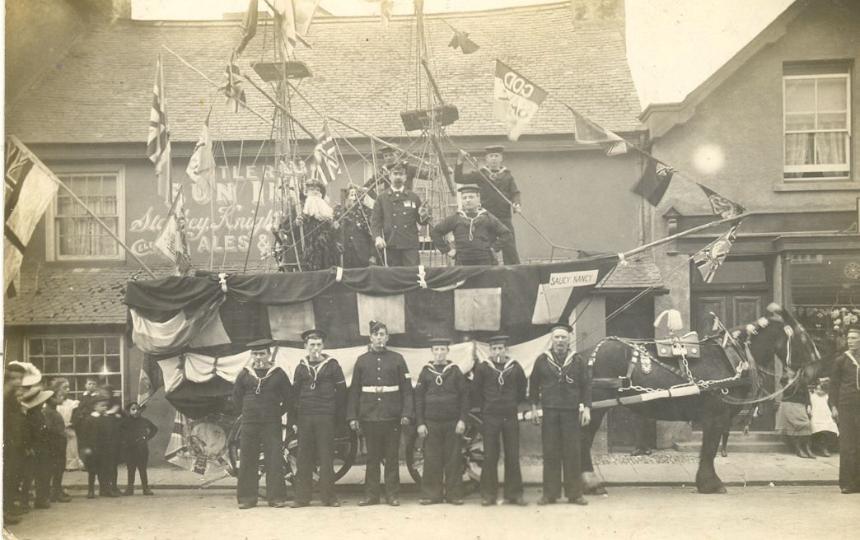
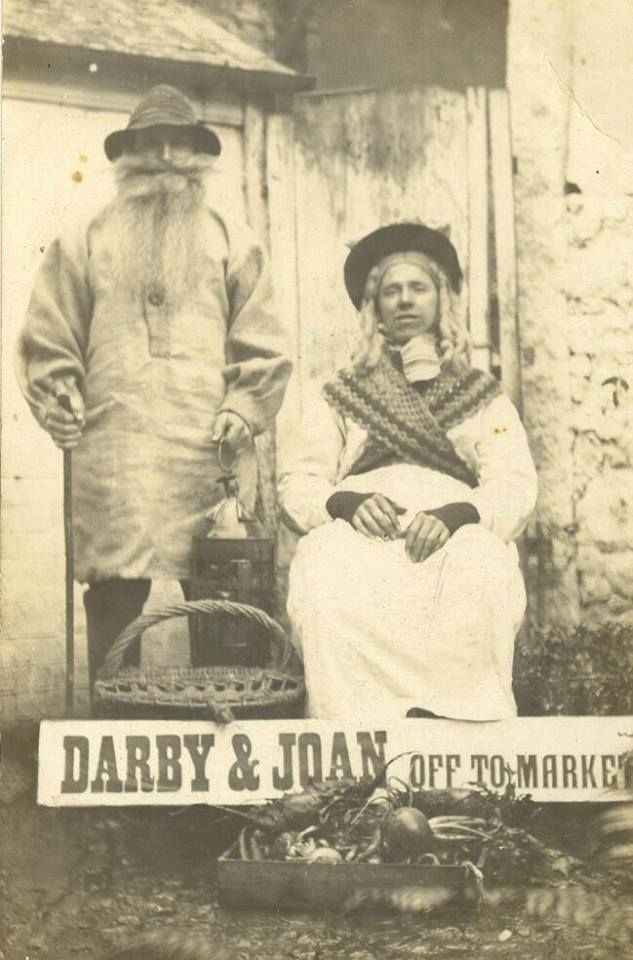
Jeremy Parker has clarified this:
'I think the writing on the back was probably intended as "Mr Boon's blacksmith".
Horace Boon was my great grandfather, Bill Tucker was my cousin's grandfather.
When Bill first came to Ashburton he was employed by Horace to do any smithing required by the ironmongery
Bill later lived at Hurst in East Street with his smithy at the back.
Many thanks to Jeremy for this
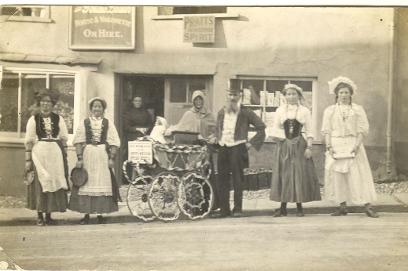
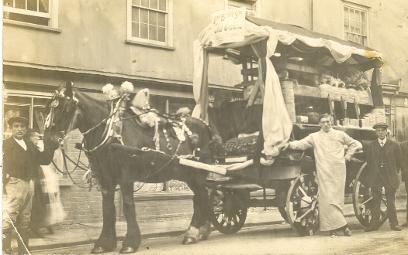
The proceeds of the carnival were to be donated to the Ashburton and Buckfastleigh Cottage Hospital, and many carnival participants roamed the streets throughout the day with collection boxes. One group, consisting of Mr J Wills and Mr J Hatch, and the Misses Keat, Pearce, Shillabear and Sargeant 'by persistent work added to the funds'.
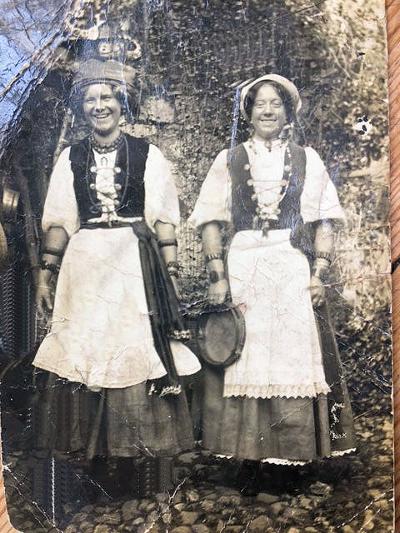
Many thanks to Frances Berry for this photograph
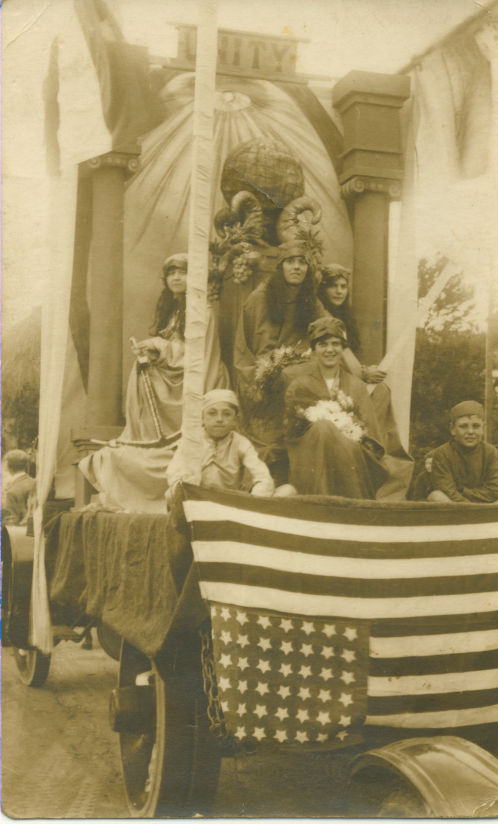
Western Times 2 September 1927 p15 col5
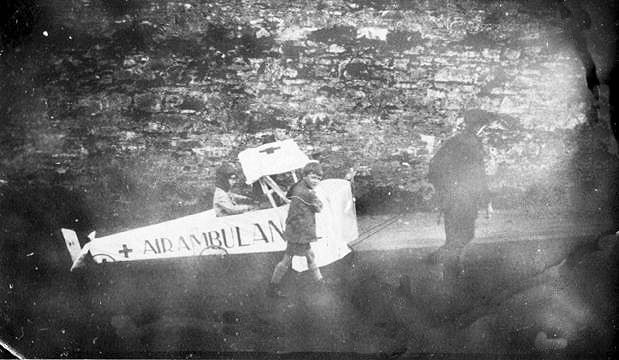
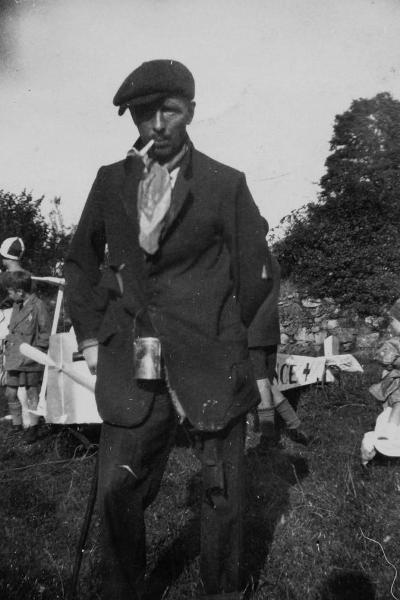
Parish records
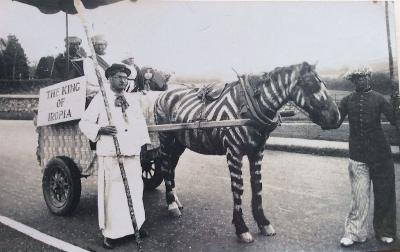
Express and Echo 21 June 1940 p5 col5
Above:
Late 1930s. Charlie Harding is standing; also in the photograph are
Glen Arscott, Dick Stanbury, and children Paddy and Pam Harding.
Many thanks to Richard and Frances Berry for this photograph.
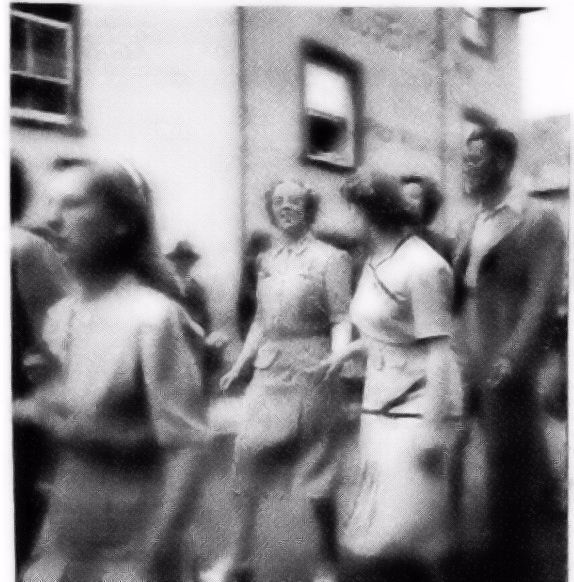
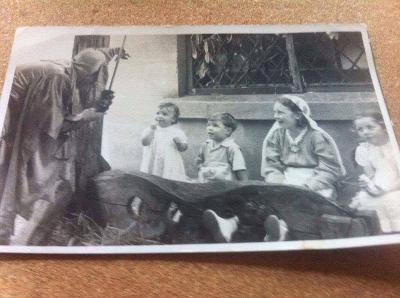
Many thanks to George Stone for both the photograph and the information
Right: Michael Webster (Portreeve) and John Brown in the carnival procession, 1970.
My own photograph, 1970
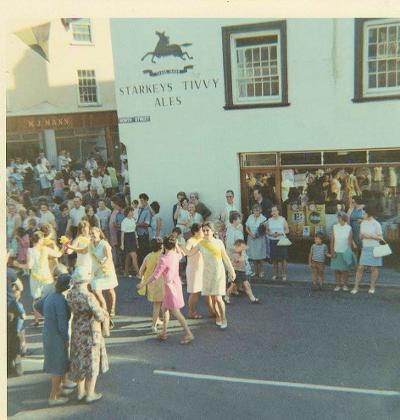
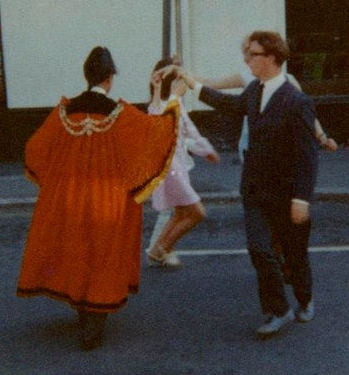
Left and below: More photographs from the 1970 carnival.
My own photographs
